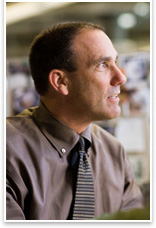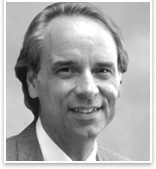Members’ Voice
How Do You Hire New Talent?
by Heather Livingston
Contributing Editor
Summary: As
a recent Work-on-the-Boards survey
indicates, staff turnover has become a greater concern over the last
two years due to strong business conditions. According to AIA Chief
Economist Kermit Baker, PhD, Hon. AIA, “More than 35 percent
of firms that track voluntary staff turnover report that it has increased
over the past year.” With
that in mind, AIArchitect asked five firm principals what strategies
they employ to attract new talent when it’s time to increase
staff. Here’s what they had to say.
Robin V. Cibrano, AIA, principal
Cannon Design, New York City
NYC office size: approx. 75 employees
We do it in a variety of ways; first, internally. We’re a large
firm that has offices throughout North America, so we’ll send
an internal e-mail to see if anyone in the other offices is interested
in the position or knows somebody who may be. We offer bonuses if
an employee provides a referral, and that person is subsequently
hired. Because we offer incentives, people are more likely to take
the time to see if they have friends in the business or people they’ve
worked with in the past who are interested in joining the firm. We’ve
gotten some of our best people that way. Most people won’t
recommend someone unless they’re comfortable that they’re
good at what they do. The second thing we do is use employment agencies
or headhunters, depending on the position. The third thing is advertising—in
the New York Times or elsewhere.
That’s usually the last resort
we take.
 Ted Hyman, AIA, managing partner Ted Hyman, AIA, managing partner
Zimmer Gunsul Frasca, Los Angeles
Firm size: approx. 70 employees
Historically, our most successful approach to hiring is through people
we already have in the office, consultants, or clients we’re
working with. With the economy and demand for staff the way it is
now, we’re starting to look at other approaches that haven’t
been as successful before—such as the AIA online service and
a number of others. We’ve also started to consider using headhunters.
We’re at the desperate stage of fulfilling our needs. Probably
the single-most successful way we’ve recruited junior people
is through our relationships with universities: USC in California,
University of Cincinnati, Rice, and Michigan. We bring people in
during their junior or senior year, sometimes even in their sophomore
year, depending on their program. I would say some of the strongest
people we have in the office now interned with us, came back after
graduation, and stayed with us ever since. Photo © Adrian Velicescu/Standard.
 Carol Ross Barney, FAIA, principal and founder Carol Ross Barney, FAIA, principal and founder
Ross Barney + Jankowski Architects, Chicago
Firm size: approx. 35 employees
For the last few years, we haven’t had to advertise at all.
We get that many resumes in the mail. Basically, we look for people
who fit in our studio more than for a certain level of experience.
There are occasions when we need a very specific skill or level,
but in general we’re looking for smart people and we’ll
build the studio around them. Most of the time, they find us. However,
having said that, we are in a growth mode right now. I think we’ve
added five staff this month. In fact, we used the AIA Chicago Web
site to recruit a few more applications, but I think that’s
the first time we’ve done it in 10 years. Photo © Ross
Barney Jankowski Architects.
 Joe Silveira, principal and CFO Joe Silveira, principal and CFO
Cambridge Seven Associates, Cambridge, Mass.
Firm size: approx. 60 employees
We approach it in a variety of ways. One, we put an announcement
on our Web site. We find that we get a number of contacts that way.
We also have—occasionally, if need be—placed an ad in
the local media. And when things get really desperate, we’ll
contact a local headhunter. Photo © C7A.
 Lawrence W. Speck, FAIA, principal Lawrence W. Speck, FAIA, principal
Page Southerland Page, Austin, Tex.
Austin office size: approx. 100 employees
We really don’t have to do anything because people come to
us. We probably put it on our Web site, but most people just send
in their resumés. If we have a specialized need, such as a
health-care expert, we’ll go to a headhunter. This office is
a good example of what Richard Florida is talking about in The
Rise of the Creative Class: people seek out a place where they feel supported
and fulfilled. Austin is like that. We get a lot of smart, interesting
people here. Photo © University of Texas staff photographer.
|


 Ted Hyman, AIA, managing partner
Ted Hyman, AIA, managing partner Carol Ross Barney, FAIA, principal and founder
Carol Ross Barney, FAIA, principal and founder Joe Silveira, principal and CFO
Joe Silveira, principal and CFO Lawrence W. Speck, FAIA, principal
Lawrence W. Speck, FAIA, principal